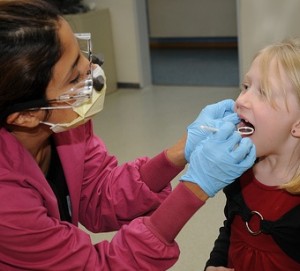Starting in 2014, the Affordable Care Act says, all medical plans sold to small groups (100 people or fewer) or individuals must include a set of “essential benefits,” and these benefits must include “pediatric services, including oral and vision care.”
In California, the benefits will be pretty extensive. The state has decided to base them on its Healthy Families dental program.
Here is where the law gets tricky. The law says that dental plans and medical plans can be sold separately. While the Affordable Care Act imposes a penalty on people who don’t have medical insurance, it does not say what happens if someone doesn’t get dental coverage for their kids.
I called the U.S. Health and Human Services Department, which has so far remained silent on that question. A spokesperson said told me no one would be available for an interview, and instead issued this statement: "The department will issue further guidance on essential health benefits through the rulemaking process." (They've been issuing a lot of guidance lately, just not on this issue.)
Evelyn Ireland, executive director of the National Association of Dental Plans says that federal regulators have told her the question may be left up to individual states. I then called the California Health Benefit Exchange, but was told that no one would be available to comment until next week.
Even if most parents do sign up for the coverage, the NADP is warning of another potential problem. It says new fees charged to insurers -- along with the cost of expanding the benefits -- will make children’s dental plans more expensive than what is currently on the market for small groups and individuals. Instead of about $21 per child per month, the cost could go up to $28 or even $36, depending on copayments, the organization says.
If you’re below 400 percent of the federal poverty level ($92,000 for a family of four) and spend more than 9.5 percent of your income on health insurance, the Affordable Care Act provides a subsidy to help you pay for these benefits. But even so, the NADP estimates that nationwide as many as 11 million adults who have dental benefits will decide they can’t afford benefits for both themselves and their kids, and will drop their own benefits. “The entire landscape is changing,” says Jeff Album, vice president of public and government affairs for Delta California.
Not everyone agrees with that prediction. The California Dental Association is confident that the new exchange will keep dental benefit costs under control. CDA President Lindsey Robinson praised California's choice to use the extensive dental benefits in the Healthy Families program. “It has a proven track record of meeting the oral health needs of California standards and meets the professional standards of dentists who are taking care of children,” she said.
Robinson is also hopeful that the state has enough dentists to cover all the children who might gain benefits under the new law.
All that remains to be seen is how many parents will sign up.
